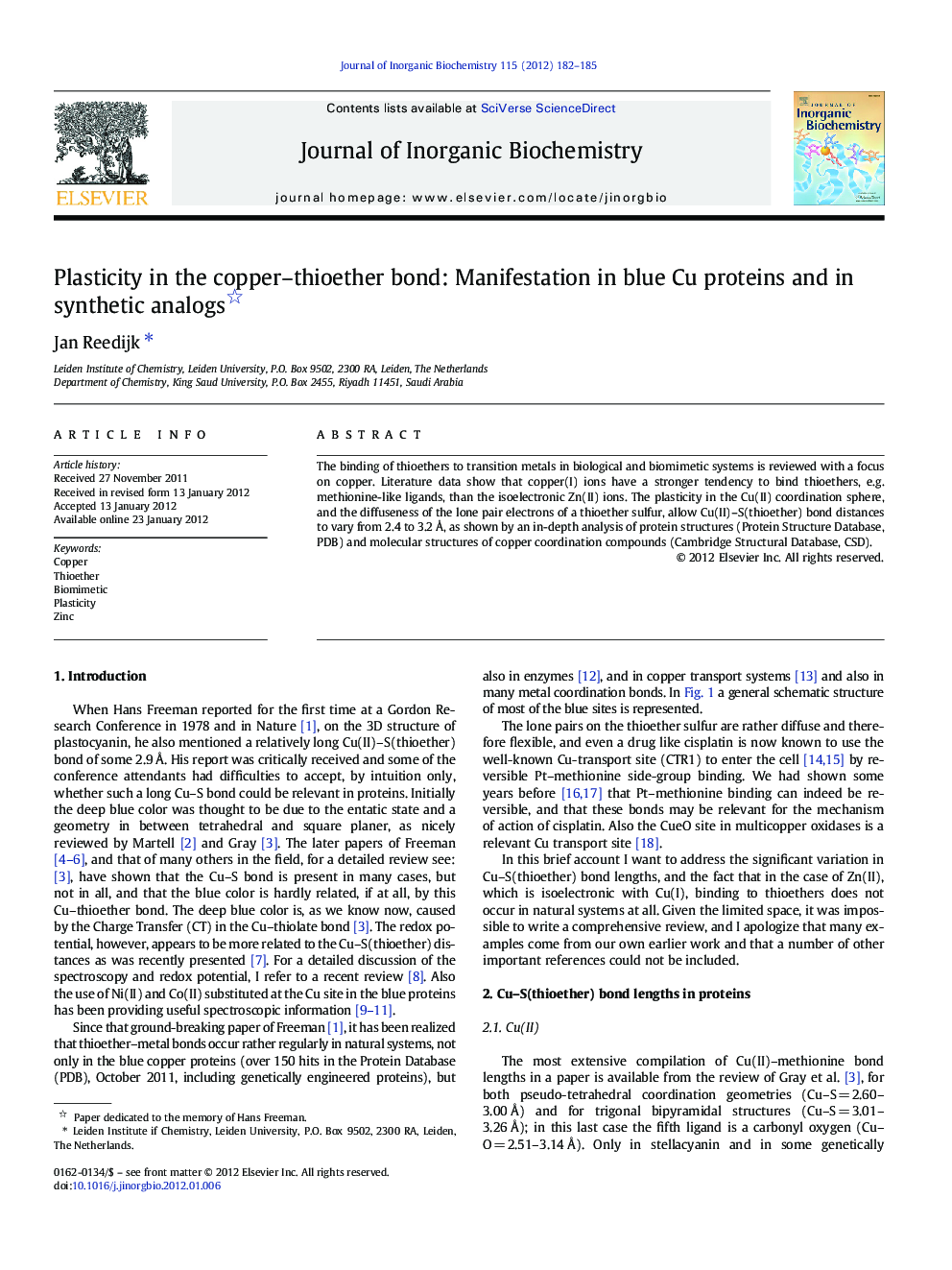| Article ID | Journal | Published Year | Pages | File Type |
|---|---|---|---|---|
| 1316392 | Journal of Inorganic Biochemistry | 2012 | 4 Pages |
The binding of thioethers to transition metals in biological and biomimetic systems is reviewed with a focus on copper. Literature data show that copper(I) ions have a stronger tendency to bind thioethers, e.g. methionine-like ligands, than the isoelectronic Zn(II) ions. The plasticity in the Cu(II) coordination sphere, and the diffuseness of the lone pair electrons of a thioether sulfur, allow Cu(II)–S(thioether) bond distances to vary from 2.4 to 3.2 Å, as shown by an in-depth analysis of protein structures (Protein Structure Database, PDB) and molecular structures of copper coordination compounds (Cambridge Structural Database, CSD).
Graphical abstractBinding of thioethers to Copper and Zinc in biological and biomimetic systems is reviewed. Copper(I) has a stronger tendency to bind methionine-like ligands, than isoelectronic Zn(II). Coordination sphere plasticity and diffuseness of the lone pairs of a thioether sulfur, allow Cu(II)-S(thioether) bonds to vary from 2.4 to 3.2 Å.Figure optionsDownload full-size imageDownload as PowerPoint slideHighlights► Binding of thioethers to copper(I) is better than to isoelectronic Zn(II). ► Plasticity in the Cu(II) coordination sphere, allow Cu(II)–S(thioether) bond distances to vary from 2.4 to 3.2 Å. ► The diffuseness of the lone pair electrons of a thioether sulfur contributes to the flexibility.
